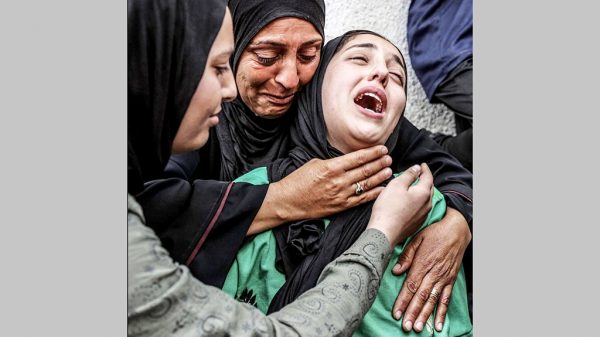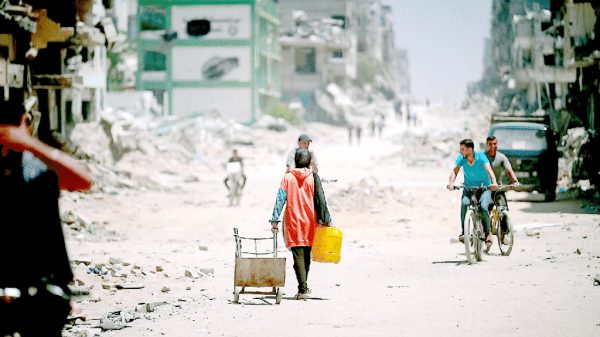Youth Engagement in Fight against COVID-19 Pandemic

The importance of the contribution of the young generation to the country’s growth and development is immense as they are the change agent of society. These people can achieve the desired objectives in all areas through their productive capabilities. The youth of Bangladesh had played significant roles in every crisis of the country including the independence movement. One of the most noteworthy facts is that Bangladesh is the only country in the world which holds 35 per cent of the young people aged between 18-25 years. This is a great opportunity for the government to capitalise on the potentials of these populations.
These populations can be used in various sectors of the country. Being students and service providers they can serve the people. They can monitor activities of the central and local government to strengthen governance as well as accountability. At the rural level, they can oversee the implementation of activities of the central government or local government. There are hundreds of examples where the youth people have mobilised them with the assistance of different non-government organisations to ensuring fairness in the distribution of different benefits among the vulnerable people and the implementation of different projects. Most importantly, they have proved them successful in building awareness among rural people on different issues.
Considering the role of these groups in the country’s growth, a pertinent question is whether they can support the government in its effort to fight against the COVID-19 pandemic. The probable response is “yes” since these groups can contribute in several ways to this fight. We have seen the reticence of most people to wear facemasks, maintain social isolation and practise safer sanitation behaviour to save them from contamination of COVID-19. This is due to the inability of the vast majority of people to follow the protective guidelines of the government. In these situations, young people can build awareness among the people so that they follow these guidelines, through the creation of different groups.
The financial hardship of poor people due to enduring lockdown and unemployment is another aspect of COVID-19. Enduring lockdown and the decisions of different private organisations to lay-off their employees have compelled many to rely on government support as well as move towards villages leaving cities. Therefore, the youth people can voluntarily form associations to mobilise collective capital to help the vulnerable at the local level. Moreover, the situation of the slum people in different cities in general and Dhaka, in particular, is very severe as they are getting it difficult to sustain without adequate income. The youth community could help these groups by mobilising resources from different sources. Their engagement would greatly reduce the pressure on the government.
Now one may wonder how these groups would get engaged in the battle against COVID-19. Before we shed light on this question, it is important to note that community engagement as an academic discourse has been ignored in the academic curriculum of Bangladesh from a historical perspective. Concentrating on the secondary and tertiary curriculum in developed countries, we can find that an enormous amount of importance is generally given on the students’ engagement in community activities. Even, they earn credits for working with the community while they pursue different degrees. However, the issue of community engagement in the curriculum of the secondary and tertiary levels of our country is almost absent. Therefore, the students do not have prior experience of working with the community. Such an experience not only helps them to feel about the community but also helps them in their professional life. For instance, if they have prior experience of working with the community during their student life, they would be better placed to serve the community when they would become public servants.
Considering the enormity of community engagement of youth, a comprehensive plan requires to be taken by the Ministry of Education along with UGC and the universities. One encouraging fact is that the UGC has made Outcome Based Curriculum (OBE) obligatory for all public and private universities in place of existing content-based curriculum. This has created scope for the universities to incorporate community engagement of the youth into the respective curriculum of each program offering entity. This will not only create opportunities for youth to get in touch with the communities to know about their struggles, experiences and emotions but also help them to apply those experiences in personal life.
As regards the role of youth in the fight against COVID-19, the government could use the local government institutions (LGIs) to mobilise them at the local level so that they voluntarily build awareness among the people about the catastrophic effect of the pandemic and how to remain safe following different guidelines provided by the WHO and the government. The LGIs are better placed as they know the youth groups in their respective areas very well. Even, they could involve these groups during the distribution of different benefits to the poor people fairly.
Besides, a comprehensive plan to engage young people in community-related activities in general and to assist the government in easing the burden while fighting this pandemic could be developed an by the Ministry Health in collaboration with the Ministry of Sports and Cultural Affairs. The issue of engagement of youth people in the community-related activities must be addressed with great intensity; otherwise, their potentials would be wasted. Using the power of youth and their association with the community several countries of the world have overcome different types of problems in the society. Therefore, all involved actors including the government, youth forums, NGOs, local government organisations, donor and other organisations should come forward within an open mind to find strategies to use the potentials of the power of youth for the betterment of the community and country.
When we take a look at the community-driven initiatives of different NGOs, it is evident that different organisations are working with the youth in isolation without any concerted efforts. Therefore, after the phase-out of these projects, the initiatives begin to die down due to the absence of the catalyst role of the NGOs. Unfortunately, there is hardly any initiative from the government to form such youth groups to work for the community. Considering the potentials of these groups in the country’s development and fight against COVID-19, the government should take immediate actions to find strategies to involve the youth people in the development process. We have been experiencing the power of nature through the devastation of COVID-19. We have learned that efforts of government cannot solve such a catastrophe. The support of different organisations, people and particularly the youth is necessary to overcome such trauma. Therefore, the government must come up with some realistic approach to involve the youth in the fight against COVID-19.
The writer is a Professor of Public Administration and an Additional Director at the Institutional Quality Assurance Cell (IQAC) at the University of Rajshahi.




























Leave a Reply